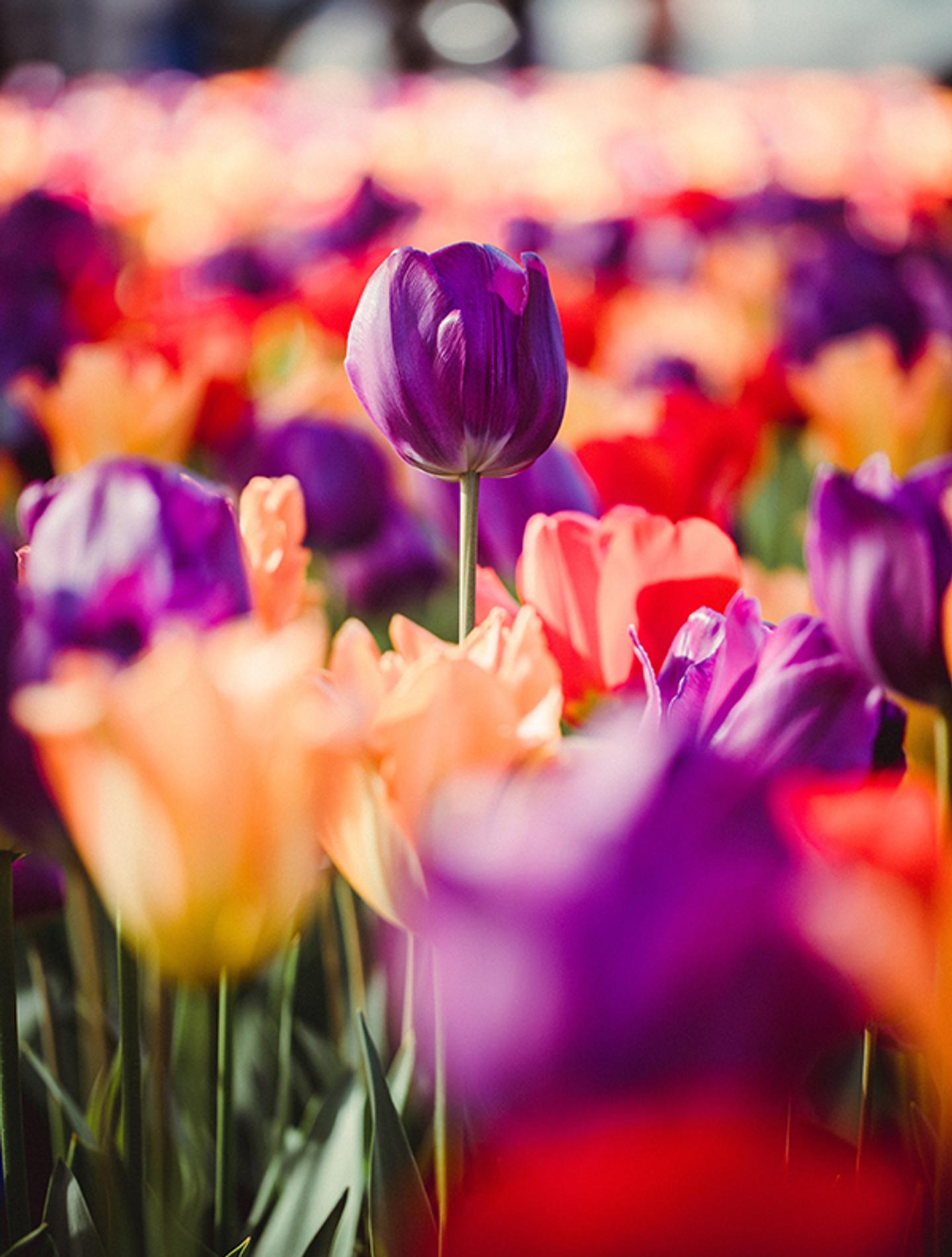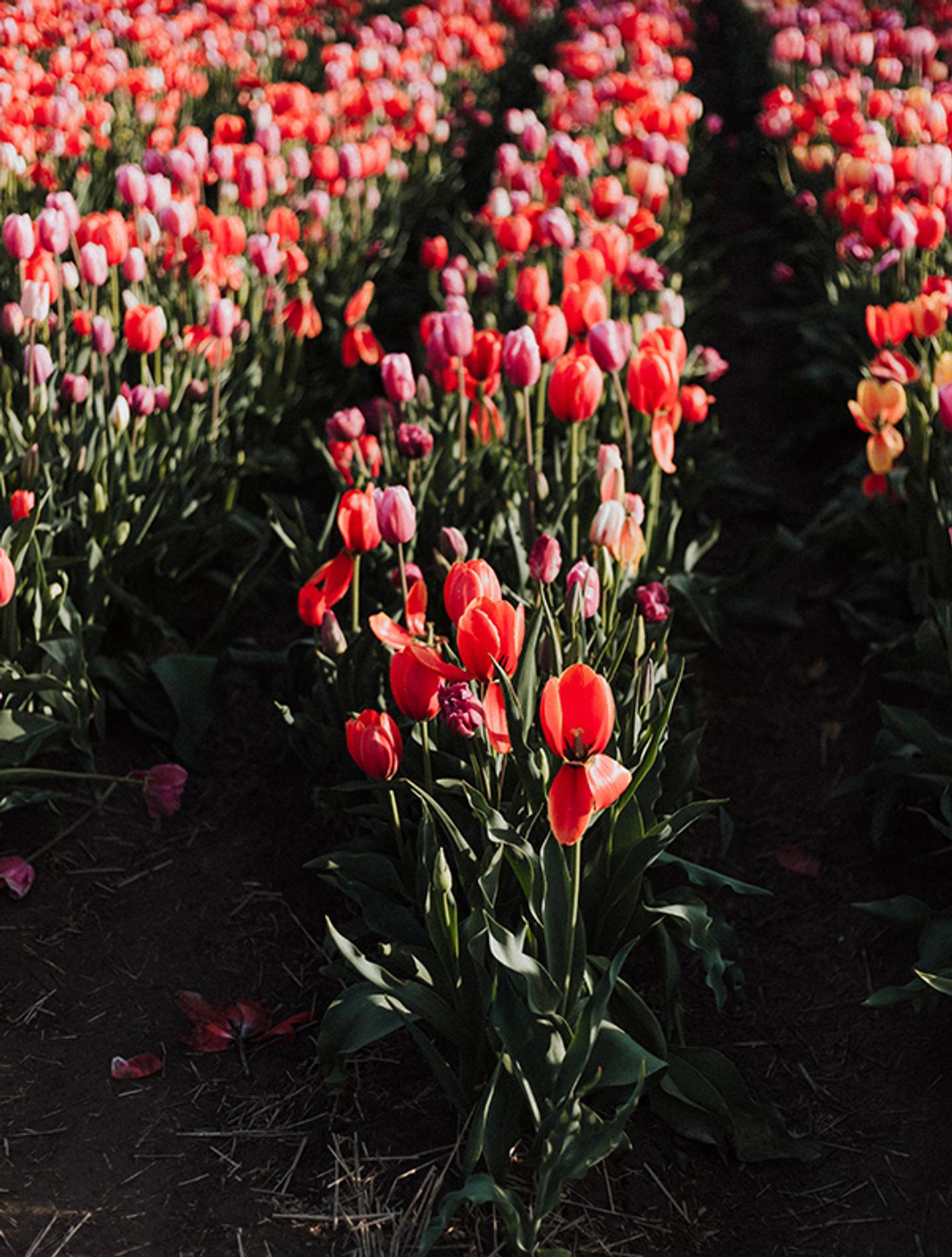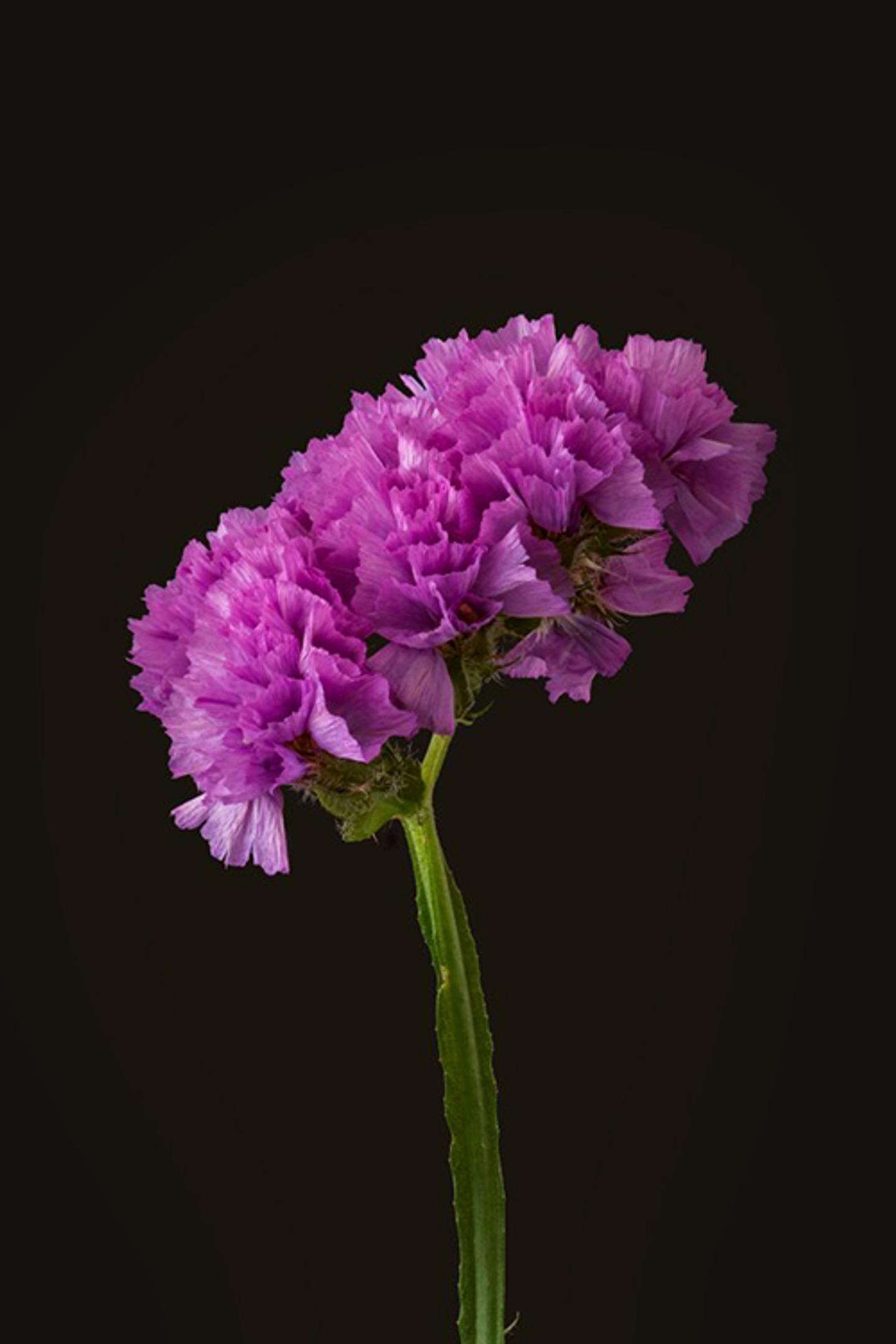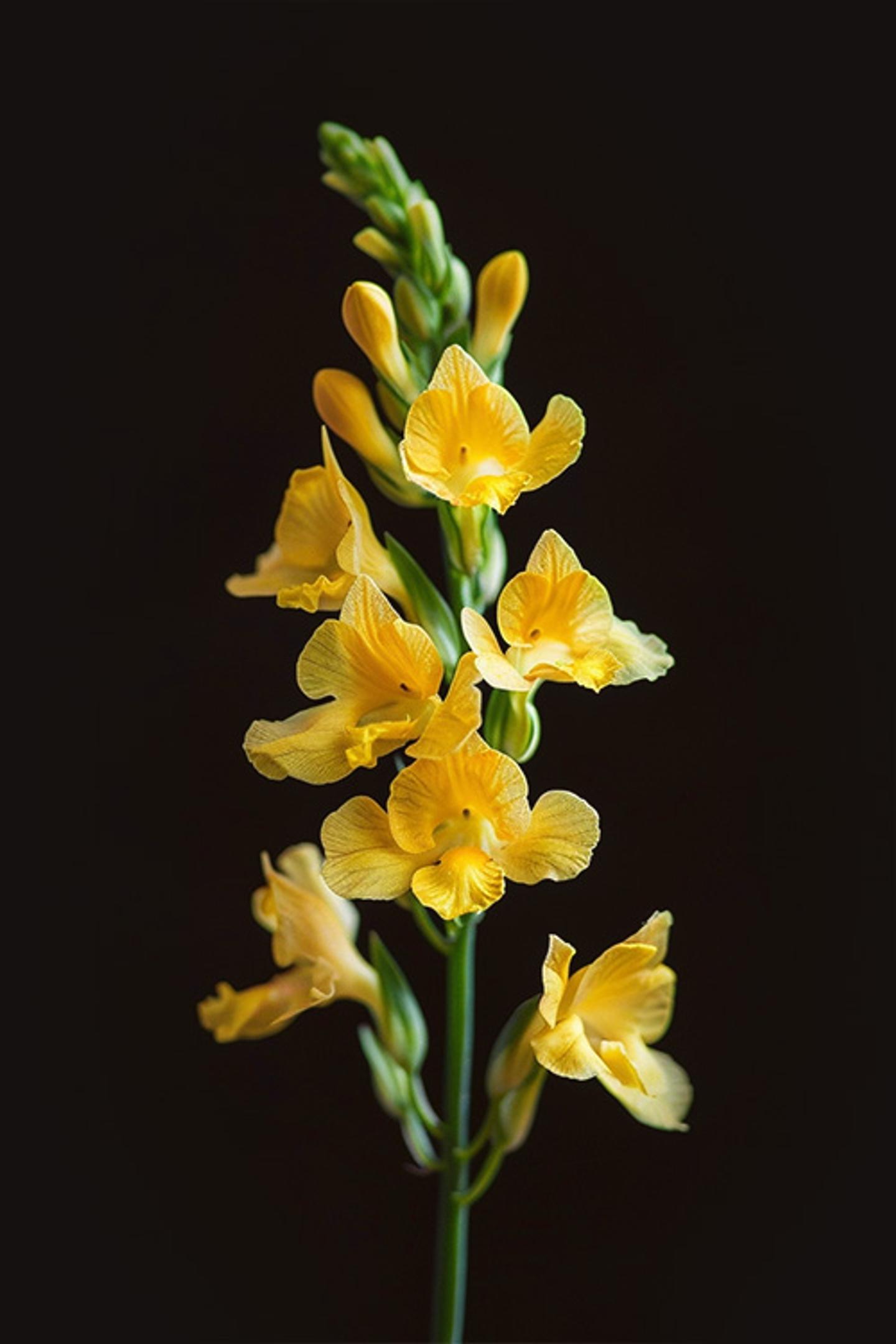Flower Meanings
Tulip


The Meaning of Tulips
The tulip may not be the most elegant flower you’ll find in a bouquet, but its charm and allure are symbolic of so much, including:
- Everlasting, perfect love between partners
- Infinite, passionate love, even if the other person rejects it
- Pride and nobility
- Abandoned or overlooked love
- The 11th wedding anniversary
- Success, wealth, welfare
- Benefaction — helping out those in need
Tulip Color Meanings
There are many flowers that have just one meaning, but the tulip has many meanings depending on its color… and it has a lot of color varieties. Here are just a few different colors and what their tulip color meaning is:
- Yellow tulips represent fruitless or unreturned love. [1] If you’re sending a yellow tulip to someone it means you have feelings for them, but unfortunately they don’t feel the same way—essentially, living in the friendzone.
- Red tulips represent passion and ideal love. Don’t send a bouquet of tulips to your sister-in-law or your partner might think something is up!
- Pink tulips represent a less romantic love, and are definitely the more appropriate choice for friends and family (perfect for the sister-in-law).
- Purple tulips are tied to royalty, just like the color purple is normally, but also, purple tulips are symbolic of abundance and prosperity.
What Do Tulips Smell Like?
Some tulips are known to be quite sweet smelling:
- Tulipa turkestanica (creamy white), Tulipa tarda (yellow with white), Tulipa urumiensis (yellow) and Tulipa whittallii (bronze orange) — all have a refined, spicy scent.
- Monte Carlo (yellow) — blooms at the beginning of April and has a honey scent.
- Prinses Irene (orange) and Yokohama (yellow) — also bloom in early April and have a spicy scent.
- Ad Rem (orange), Apeldoorn (red), and Golden Apeldoorn (yellow) — blooms later in April and has a sweet, heavy scent.
- Angélique (creamy white with pink) — flowers in May and has a subtle, fresh and sweet scent.
- Orange Princess (orange), also flowers in May—has a honey scent. [7]

"A tulip doesn’t strive to impress anyone. It doesn’t struggle to be different than a rose. It doesn’t have to. It is different. And there’s room in the garden for every flower."
Marianne Williamson
The History of the Tulip
All common tulips belong in the Tulipa genus, but some variations are called neo-Tulipa because they’ve grown wild for so many generations they’ve developed new adaptations and characteristics. [2]
The tulip classically represents love, although it was considered a symbol of charity by the Victorians. The Turkish people who originally bred the flower considered it a symbol of paradise on earth, making it a part of many religious and secular poems and art pieces. While the Ottoman empire planted the bulbs to remind them of heaven and eternal life, the Dutch that popularized the flower considered it a reminder of how short life can be.
In the 16th century, a part of Kazakhstan was conquered by the Ottoman Empire. The leader of the Ottoman Empire was Sultan Suleyman the First. It is said that the tulip was discovered in the mountains of Kazakhstan by explorers. Some tulips were brought to present-day Turkey and planted in the gardens of the social elites of the Ottoman Empire. Constantinople (now Istanbu) in the 16th century had the most beautiful gardens in the Middle East, and every year when the tulips were in bloom, a lavish party was thrown by the head Sultan in their honor. [3]
The tulip then became a symbol of power and wealth for the Turkish, and sultans began to wear them in their turbans. Because tulips and turbans became linked, it is believed that the name tulip was derived from the Persian word ‘tulipan’, which means turban.
Sultan Suleyman the First gave tulips as gifts to respected guests, such as Ogier Ghiselin de Busbecq, the Viennese ambassador to the Ottoman Empire. In Austria, de Busbecq gave his friend Carolus Clusius some tulips, who happened to be the garden manager of the Emperor of Austria. Clusius then became a professor of botanical study in 1593 and was the first to plant tulips in the Netherlands later that year. Tulips were scarce and therefore incredibly expensive.
About 40 years later, in the 17th century (1634-1637), the world-famous tulip craze (also known as tulip mania) bloomed onto the scene. There was a surge in the demand for tulips, and they became more and more expensive. It is generally considered the first recorded speculative bubble. A single tulip bulb at one point had the value of an Amsterdam canalhouse. In 1637 the tulip craze stopped just as quickly as it had begun. Historically, it had no critical influence on the prosperity of the Dutch Republic, the world’s leading economic and financial power in the 17th century. Also, from about 1600 to 1720, the Dutch had the highest per capita income in the world. The term “tulip mania” is now often used metaphorically to refer to any large economic bubble when asset prices deviate from intrinsic values.
The first tulips had flamed flowers, as painted by Rembrandt. These flames were the result of a viral infection. Flamed tulips today are healthy tulips whose flame is genetic. Flamed tulips have sharply pointed petals and seem to dance like flames when they blow in the wind.
DID YOU KNOW - Tulip Fun Fact
Today, the Netherlands is still the world’s main producer of commercially sold tulips, producing as many as 3 billion bulbs annually, mostly for export.

How to Grow Tulips
Tulips require full sun to look their best, which means getting at least 6 hours of bright, direct sunlight every day. Tulips prefer fast-draining soil, so be sure to add them as part of your rock garden and amend the soil with some rocks and sand to help with drainage.
When to Plant Tulips
Tulip bulbs should be planted in the fall because they require a chilling period before they begin to bloom. The soil needs to have cooled off from the summer growing season before you plant, which could mean September in cold climates (zones 3 to 5), October in transitional climates (zones 6 to 7), and November or December in warm climates (zones 8 to 9). Check the soil temperature with a soil thermometer and plant when the temperature is 60 degrees Fahrenheit at a depth of 6 inches. If you plan to grow tulips in areas where the soil temperature does not drop below 60 degrees for at least 12 weeks, buy pre-cooled bulbs and plant them in December.
How to Prepare the Soil for Planting Tulips
Prepare the planting area for tulips with garden soil for flowers, mixing 3 inches of garden soil into the top 6 to 8 inches of native soil. Tulips do best with well-drained soil, so if your native soil has a lot of clay, be sure to mix in enough soil with perlite or sand to help with aeration and drainage. The nutrition provided by the soil will help tulips grow a healthy root system in the fall, which is essential for a big spring bloom. For the absolute best results from your tulips, though, you’ll want to combine the power of great soil with some plant food.
How to Plant Tulips
If what you’re looking for is a big cluster of tulips together as a large accent for your garden, the best way to do so is groups of 10 bulbs at minimum. Plant each bulb around 8 inches deep (use a ruler or measuring tape to measure 8 inches from the top of the bulb to the top of your soil) with the pointy end of the tulip bulb facing up. Bulbs can be planted quite close together. Water thoroughly.
How to Grow Tulips in a Pot
If you don’t have your own yard or enough space left to plant tulips in the ground, you can also plant tulips in pots! As with in-ground plantings, you’ll want the bulbs to be buried at least 8 inches deep, so make sure you have a deep enough container. Before your area’s first frost:
- Move the container to a cool, dry location that stays around 40 degrees Fahrenheit during the winter.
- When you see tulips emerging outdoors, bring the container out into a sunny spot and water the soil.
- Begin watering regularly once you begin to see green growth in the spring.
How to Water Tulips
Water tulips when you first plant them, giving each planting area a really thorough soak. Water once per week for the first month after planting in the fall, then leave the plants alone until springtime. You can start watering your tulips in the springtime once you start to see leaves appear.
How to Feed Tulips
Once the flowers have faded, apply a plant food fertilizer to help promote leaf growth so the bulb can store nutrients for the next growing season. Feed for the last time each year in the late fall (around the same time as you would plant new bulbs).[5]
DID YOU KNOW - Tulip petals are edible!
Tulip petals are edible and can be used in place of onions in many recipes.

How to Care for Tulips
Alright, and now onto how you should care for your freshly cut tulips.
Step 1. Snip the end of your stems. This may come as a shock to you because it did for us, but tulips keep growing after they’ve been cut and are placed in a vase—sometimes up to 6 inches or more! [6]
To get the most out of your tulips, buy them when the buds are still closed, but the color of the flower is evident. In other words, don’t buy them if they are way too small and unopened.
In addition, to keep tulips lasting longer, remove any leaves that would make contact with water because the leaves will start to decompose and spoil the water, which will then make its way through the flowers and kill them faster. Most importantly, make sure you start off with a clean vase that is bacteria-free to keep the flowers as fresh as possible for the longest amount of time.
Step 2. Just stick to adding fresh, cold water to the vase: no need to add vodka, or pennies, or any other home trick. Tulips just want some light and fresh water.
Step 3. Place your freshly cut tulips in the vase and make sure they get enough light. They are phototropic, so they will bend toward the light as they continue to live in the vase. If you find your tulips are bending, it’s because they are searching for more light. Make sure you place them close enough to a good source of light but not in direct sunlight.
*Pro-tip about tulips and daffodils* Tulips and daffodils look great together, but make sure you put daffodils in a separate vase of water first for 4-8 hours. Daffodils put out a sap-like liquid that will get sucked into your tulips and ruin them.
Step 4. Every few days, be sure to change the water in the vase with fresh water. You can even do it every day if you remember. It will prevent bacteria from developing and preserve your freshly cut tulips for much longer.
When to Send Tulips as a Gift
While most commonly used in the Spring when they’re in bloom, there is never a bad time to give tulips. They come in nearly every color you can imagine and are sure to brighten up the look of any bouquet!
Tulip Bouquets
References:
Flower Meanings — keep discovering

Statice
A part of the Limonium family, you’ll often see statice used in fresh and dried flower arrangements due to its beautiful shades and unique shape. Plus, there are over 120 different species of statice!

Stock
Stock is not just your average beautiful bloom! They’re also known as one of the easiest plants to grow. Stock are festively fragrant, come in a variety of colors, and are named…stock…huh? Don’t worry we’ll get into how these stunning blooms got their name in just a bit…

Sunflower
What’s more joyful than a sunflower? Their huge, yellow-orange blooms tower over the garden, but they make up for stealing the show by providing seeds, feed, and pollen. Sun-seekers, summer lovers, and snowbirds who flock south at autumn’s first chill, this steadfast symbol of sun-worship is for you.

Texas Bluebonnet
Predominantly found in the southwestern parts of the United States, allow us to formally introduce you to the official state flower of Texas, the bluebonnet. Named after the bonnets worn by pioneer women to shield them from the sun, the bluebonnet epitomizes both beauty and poise.

Statice
A part of the Limonium family, you’ll often see statice used in fresh and dried flower arrangements due to its beautiful shades and unique shape. Plus, there are over 120 different species of statice!

Stock
Stock is not just your average beautiful bloom! They’re also known as one of the easiest plants to grow. Stock are festively fragrant, come in a variety of colors, and are named…stock…huh? Don’t worry we’ll get into how these stunning blooms got their name in just a bit…

Sunflower
What’s more joyful than a sunflower? Their huge, yellow-orange blooms tower over the garden, but they make up for stealing the show by providing seeds, feed, and pollen. Sun-seekers, summer lovers, and snowbirds who flock south at autumn’s first chill, this steadfast symbol of sun-worship is for you.

Texas Bluebonnet
Predominantly found in the southwestern parts of the United States, allow us to formally introduce you to the official state flower of Texas, the bluebonnet. Named after the bonnets worn by pioneer women to shield them from the sun, the bluebonnet epitomizes both beauty and poise.
Ready to send beautiful flowers?
Our guided experience helps you send a one-of-a-kind arrangement perfect for every occasion.
Send Flowers